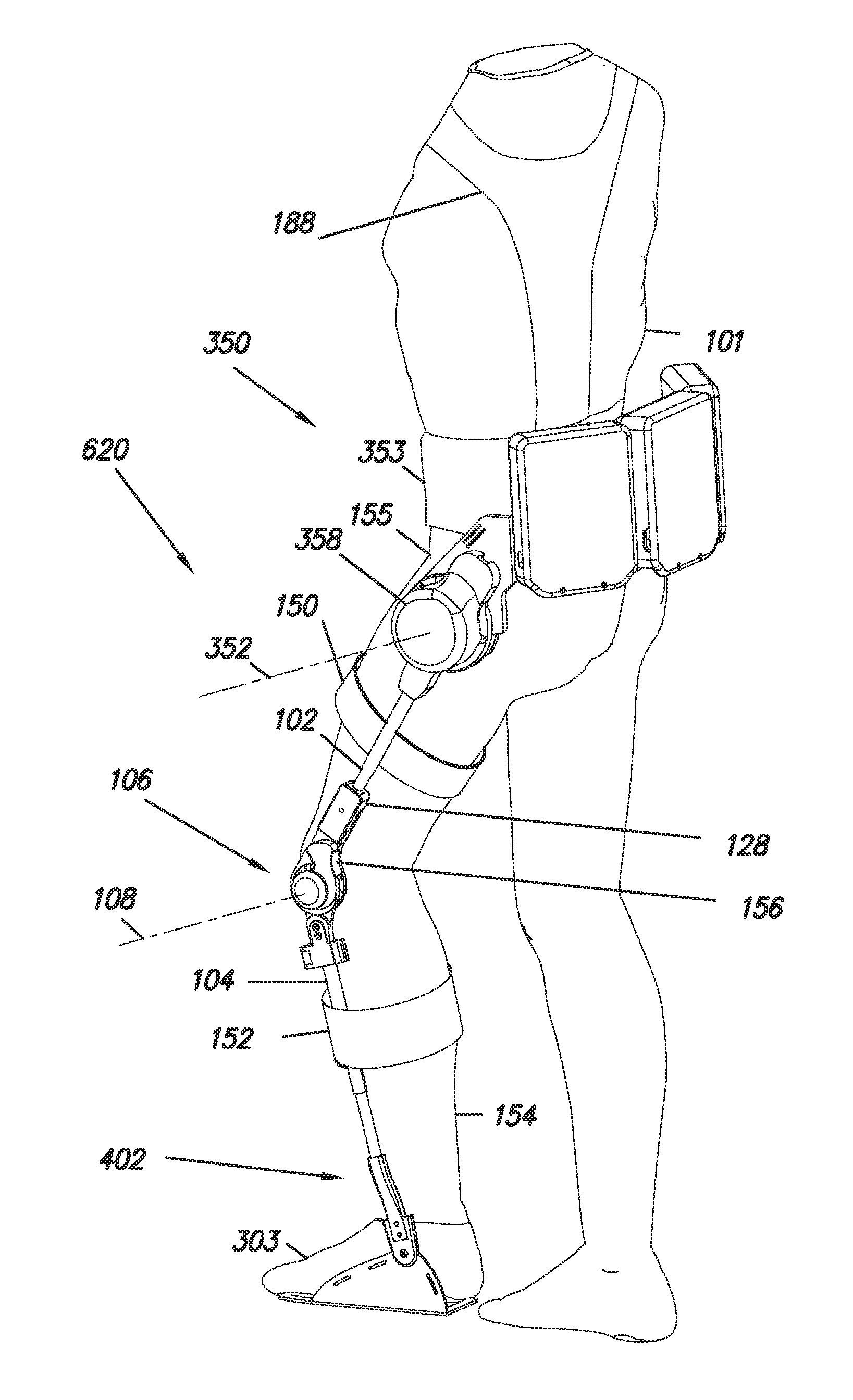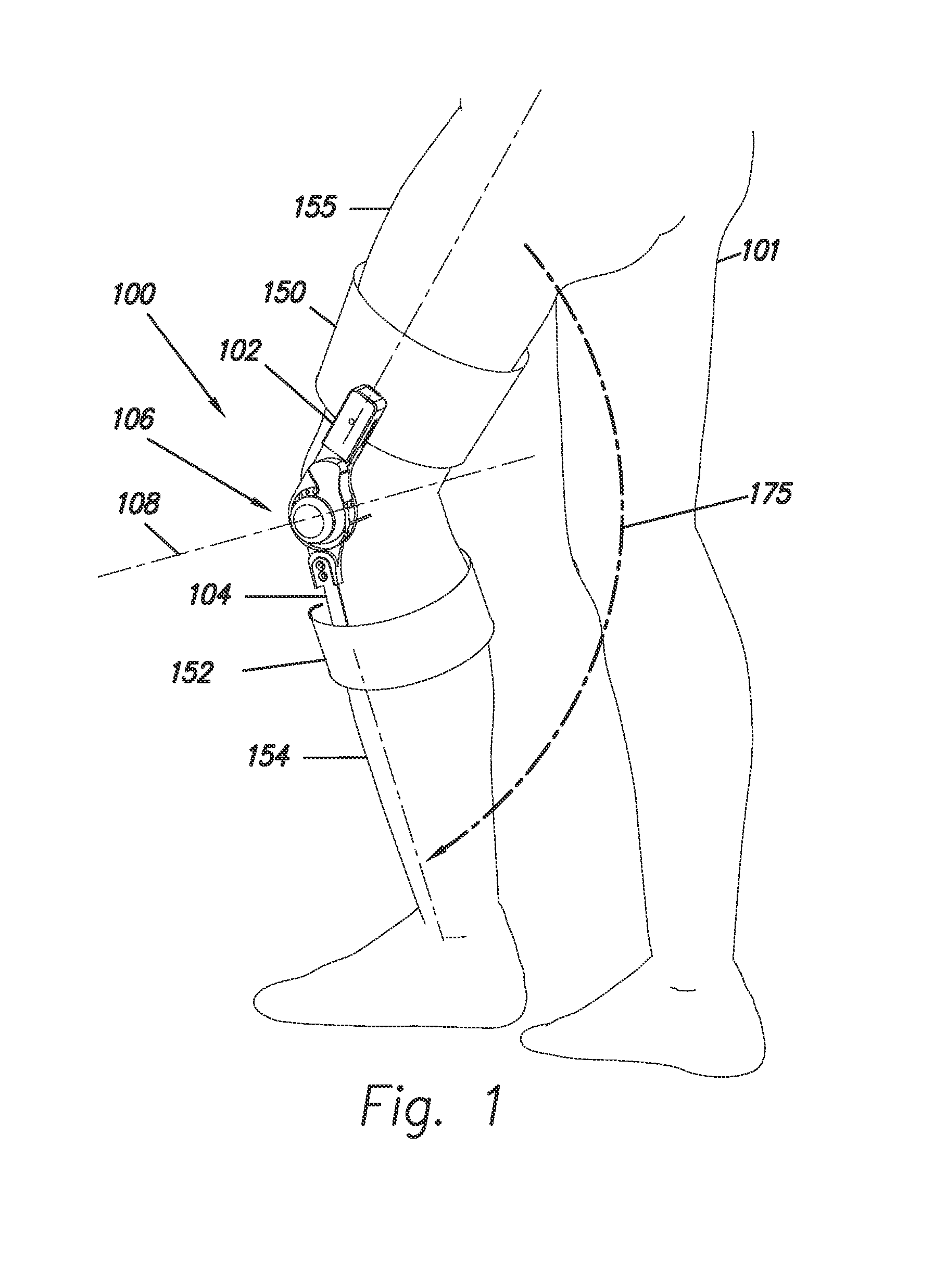Controllable passive artificial knee
- Summary
- Abstract
- Description
- Claims
- Application Information
AI Technical Summary
Benefits of technology
Problems solved by technology
Method used
Image
Examples
Embodiment Construction
[0036]FIG. 1 shows an embodiment of an exoskeleton 100 which is coupled to a user 101. Exoskeleton 100 comprises a thigh link 102, a shank link 104 and a knee joint 106 configured to allow flexion and extension rotations between thigh link 102 and shank link 104 along a knee axis 108. Extension rotation indicates the motion of shank link 104 and thigh link 102 when shank link 104 and thigh link 102 move away from each other. Arrow 175 shows the direction of the extension movement of shank link 104 relative to thigh link 102. Flexion rotation indicates the motion of shank link 104 and thigh link 102 when shank link 104 and thigh link 102 move close to each other. In some embodiments of the invention, exoskeleton 100 further comprises a thigh connector 150 that allows coupling to a user's thigh 155. In some embodiments of the invention, exoskeleton 100 further comprises a shank connector 152 that allows coupling to a user's shank 154. In some embodiments of the inventions thigh connec...
PUM
 Login to View More
Login to View More Abstract
Description
Claims
Application Information
 Login to View More
Login to View More - R&D
- Intellectual Property
- Life Sciences
- Materials
- Tech Scout
- Unparalleled Data Quality
- Higher Quality Content
- 60% Fewer Hallucinations
Browse by: Latest US Patents, China's latest patents, Technical Efficacy Thesaurus, Application Domain, Technology Topic, Popular Technical Reports.
© 2025 PatSnap. All rights reserved.Legal|Privacy policy|Modern Slavery Act Transparency Statement|Sitemap|About US| Contact US: help@patsnap.com



